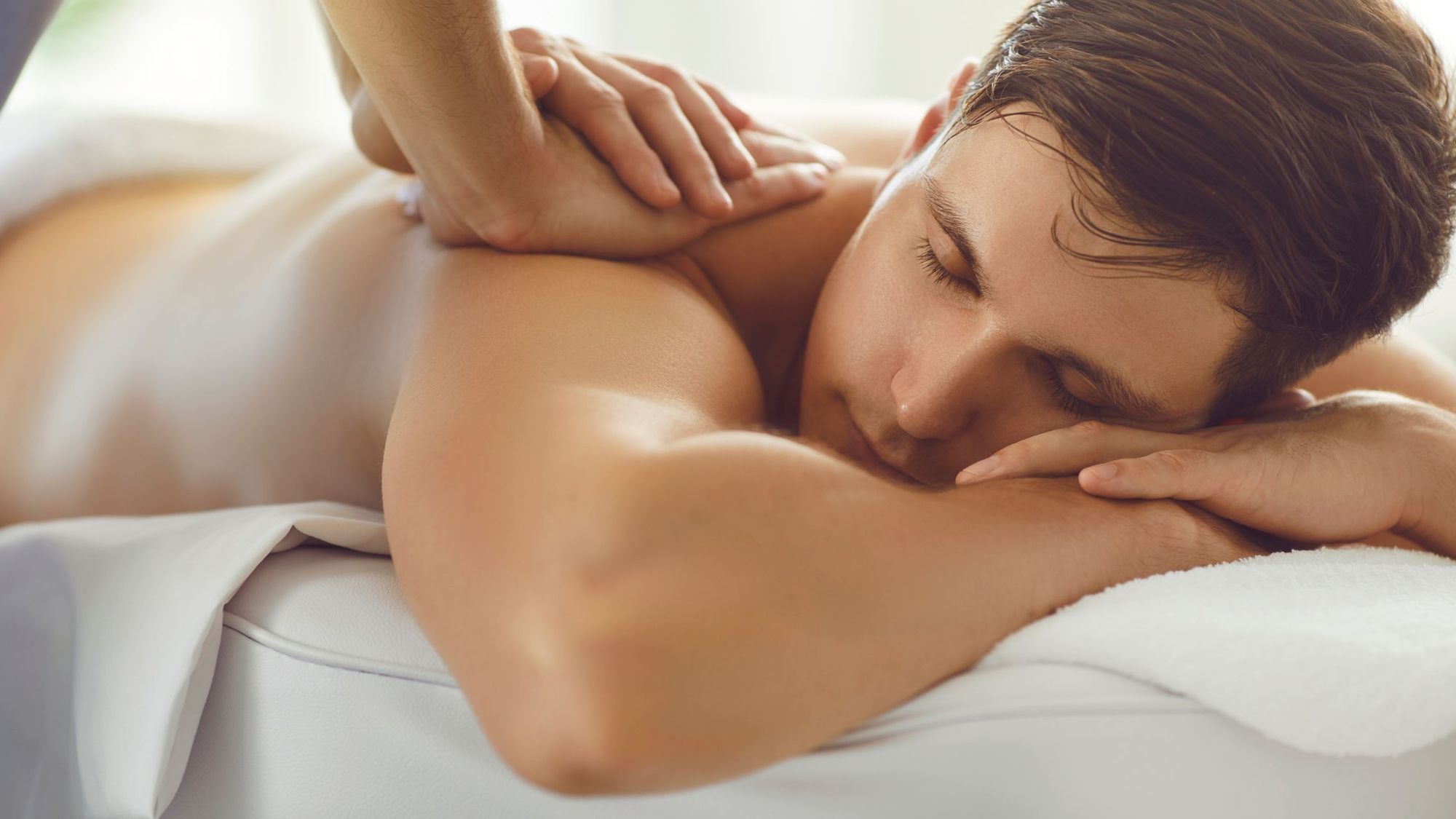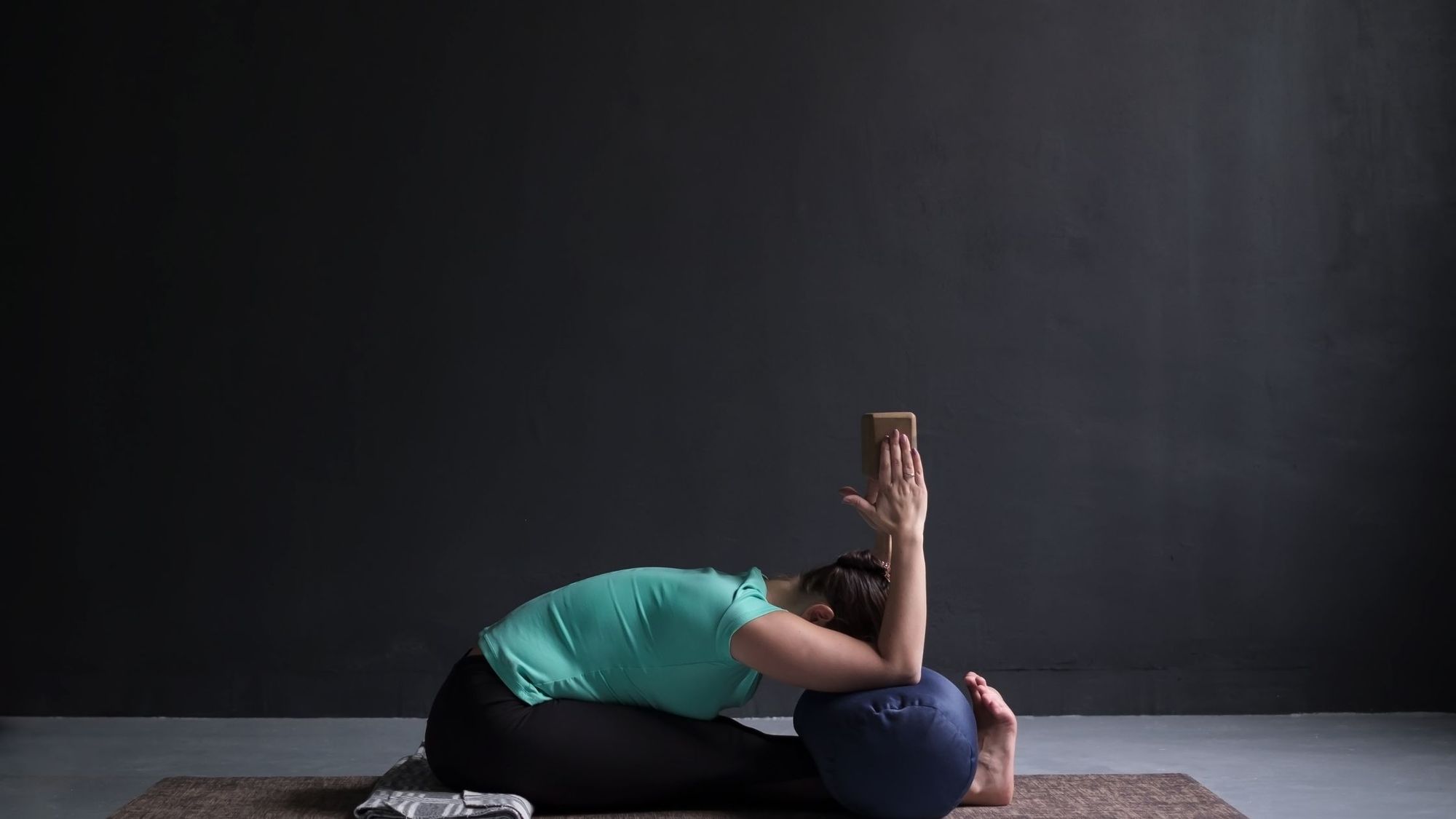
Chronic neck pain is one of the most common types of chronic pain. Poor posture while looking downwards at a phone or laptop (known as ‘tech neck’ or ‘text neck’) is one of the most common reasons for chronic neck pain. The digital world currently rules much of our work and even leisure time – perhaps a little too much, as we can spend endless hours scrolling on social media. This puts a lot of strain on our necks as we hold ourselves in tensed up, often misaligned positions and hold poor posture for hours, overloading our bodies. Combined with stress, commuting in traffic jams, and bad sleeping positions, is it any surprise that over 80% of us will experience neck pain at some point? Or that many of us affected will develop chronic neck pain?
Thankfully, remedial massage therapy may help reduce the severity of chronic neck pain and even instill healthy movement habits.

Forward Head Posture as a Cause Of Chronic Neck Pain
Chronic forward head posture, also known as the ever-so-common tech neck, text neck, upper cross syndrome, or dowager’s hump, is perhaps the most common cause of neck pain among professionals. Here, your head position shifts too far forward, and your neck is over-extended while your head tilts backward. Severe cases can not only make you look years older, but are also painful and disabling. Nerve compression and joint damage are the worst manifestations, highlighting why early treatment is essential.
The term “upper cross syndrome” describes the pattern of underactive and overactive muscles that sustains an unhealthy neck posture. Here, the suboccipitals, scalenes, sternocleidomastoid, upper trapezius, and levator scapula are too tight and overactive. The cervical (neck) erector spinae, deep neck flexors, rhomboids, and lower trapezius are too weak, or underactive.
Weakened muscles need others nearby to compensate for them, which allows the upper cross syndrome to become chronic and become less likely to self-resolve without treatment. Then, this places excessive strain on the joints and their ligaments and may pinch nerves through misalignment. Other complications of forward head posture include temporomandibular joint (TMJ) dysfunction, weaker respiratory muscles, and poor static balance.
How Remedial Massage Can Help
Remedial massage therapy goes beyond methods used for relaxation, such as Swedish massage. I have recently finished my own qualification in remedial massage, and have already seen many people with forward head posture or upper cross syndrome. Remedial massage uses several specific techniques to improve neuromuscular function, relieve excess tension, and help weak muscles begin to strengthen.
The ”Big Five” techniques that differentiate remedial massage from relaxation are:
- Myofascial release, where your therapist uses an initial sinking and hooking motion to restore length to your fascia (the connective tissue that surrounds the muscles)
- Neuromuscular technique, a deep diving motion that can benefit nerve and muscle function
- Trigger point release, where sustained pressure restores circulation and function to “knotted” areas
- Muscle energy technique, where you counteract a static passive stretch that your therapist places on a muscle, and
- Mobilization, where your therapist applies gentle, passive dynamic stretching.
Over time, regular treatment can not only soothe pain and stiffness, but also help you re-learn healthy movement habits. The goal is to prevent injuries and facilitate physical activity through a healthy musculoskeletal system.
Research on Remedial Massage For Neck Pain
Massage therapy, including muscle energy techniques and myofascial release, can successfully reduce the severity of neck pain and associated disability.

Muscle Energy Techniques And Forward Head Posture
A clinical study published in June 2022 tested remedial massage therapy, centering around muscle energy techniques and posture correction exercises, in people with forward head posture. The control group performed strengthening exercises to rule out the possibility that all they needed was correct physical activity.
The treated group received standard muscle energy techniques. Volunteers were asked to exert around 20% of their strength, or match the therapist’s level of force, against a passive stretch of the affected muscle for seven seconds. This was repeated three to five times per muscle. Each repetition involves the therapist gradually increasing the range of motion; by the last repetition, you can expect tight muscles to have a significantly greater range.
After treatment, average neck pain fell from a severity of 7.12 to 2.28 for the treated group. This means an improvement from moderately severe pain to mild pain, and some people do not notice this level of severity when they are busy or distracted. As for disability, average scores fell by almost two-thirds, from 30.96 to 10.78. The angle between the head and neck improved too, from an average of 42.15 to 46.9 degrees. All three of these improvements were double the gains seen in the control group, meaning that remedial massage therapy can be a far better option than physical therapy alone.
Additionally, a review of muscle energy technique-focused massage found significant benefits in both acute and chronic neck pain. Use of the technique was effective in the vast majority of papers, and in some studies, it was better than the other treatments it was compared to. Combining MET-based therapy with more conventional treatments, such as TENS machines, exercises, and heat therapy, led to the best results.
Myofascial Release
Myofascial release is generally the first remedial massage technique I will use during treatment once I have relaxed my client with Swedish techniques. Like MET, it can produce fast-acting, significant benefits that may accumulate over time.
Another clinical trial compared myofascial release-based therapy to dry needling in people with chronic neck pain. Everyone had myofascial trigger points on one side of their upper trapezius muscles. Trigger points are localized painful spots that compromise muscle function, and are known to contain high levels of signaling chemicals responsible for pain and inflammation.
In this study, both myofascial release and dry needling was effective in reducing neck pain. Average pain scores fell from an average of 4.79/10 to 2.14/10 among the myofascial release group, with similar benefits in the dry needling group. Myofascial release also gave them an increased pain threshold, but the effect was stronger for dry needling. As dry needling of trigger points does involve needles similar to those used in acupuncture, you may still prefer non-invasive, manual-only therapy.
Genetic Variations That May Contribute To Neck Pain
Certain genetic variations related to your muscle and connective tissue production can contribute to or cause neck pain. If you score lower on your Strength Profile of your Premium CircleDNA test (found under Sports and Fitness Reports) or in other factors that affect how well you build muscle and strength, you could be more likely to have upper cross syndrome. Additionally, a higher rating on your Injury Risk measurement may indicate greater vulnerability to upper cross syndrome, due to lower type V collagen integrity.
A study on college-level music students found that women had more than double the rate of upper cross syndrome, most likely because of less muscle mass and a higher risk of hypermobility to some degree. Type of instruments played did not affect these results. My own joint hypermobility has meant I am more likely to experience neck pain, and I even had TMJ dysfunction until regular Pilates classes strengthened the muscles inside my neck. Neck pain is common among people with Ehlers Danlos Syndrome and others on the hypermobility spectrum thanks to craniocervical instability, partly because your muscles tense up to compensate. And if you’re wondering whether massage therapy can be safe and effective in cases of Ehlers Danlos Syndrome, I have successfully treated clients with more severe manifestations than mine. In fact, they found massage therapy to be one of the best ways to reduce pain and stiffness from overcompensation.
Massage Therapy for Chronic Neck Pain – Yes Or No?
Overall, remedial massage therapy is an effective way to relieve neck pain and associated mobility restrictions. It can correct inappropriate movement habits by strengthening weaker muscles and stretching out tightened ones, and may prevent complications in the future. Just remember to check your potential therapist’s qualifications if you have a medical condition such as a connective tissue disorder or injury.
References:
- (PDF) The Effect of Muscle Energy Technique and Posture Correction Exercises on Pain and Function in Patients with Non-specific Chronic Neck Pain Having Forward Head Posture—a Randomized Controlled Trail
- (PDF) The Effect of Muscle Energy Technique and Posture Correction Exercises on Pain and Function in Patients with Non-specific Chronic Neck Pain Having Forward Head Posture—a Randomized Controlled Trail
- Muscle Energy Technique in the Rehabilitative Treatment for Acute and Chronic Non-Specific Neck Pain: A Systematic Review.
- Immediate Effects of Dry Needling and Myofascial Release on Local and Widespread Pressure Pain Threshold in Individuals With Active Upper Trapezius Trigger Points: A Randomized Clinical Trial – ScienceDirect
- Hypermobile Ehlers‐Danlos syndromes: Complex phenotypes, challenging diagnoses, and poorly understood causes






